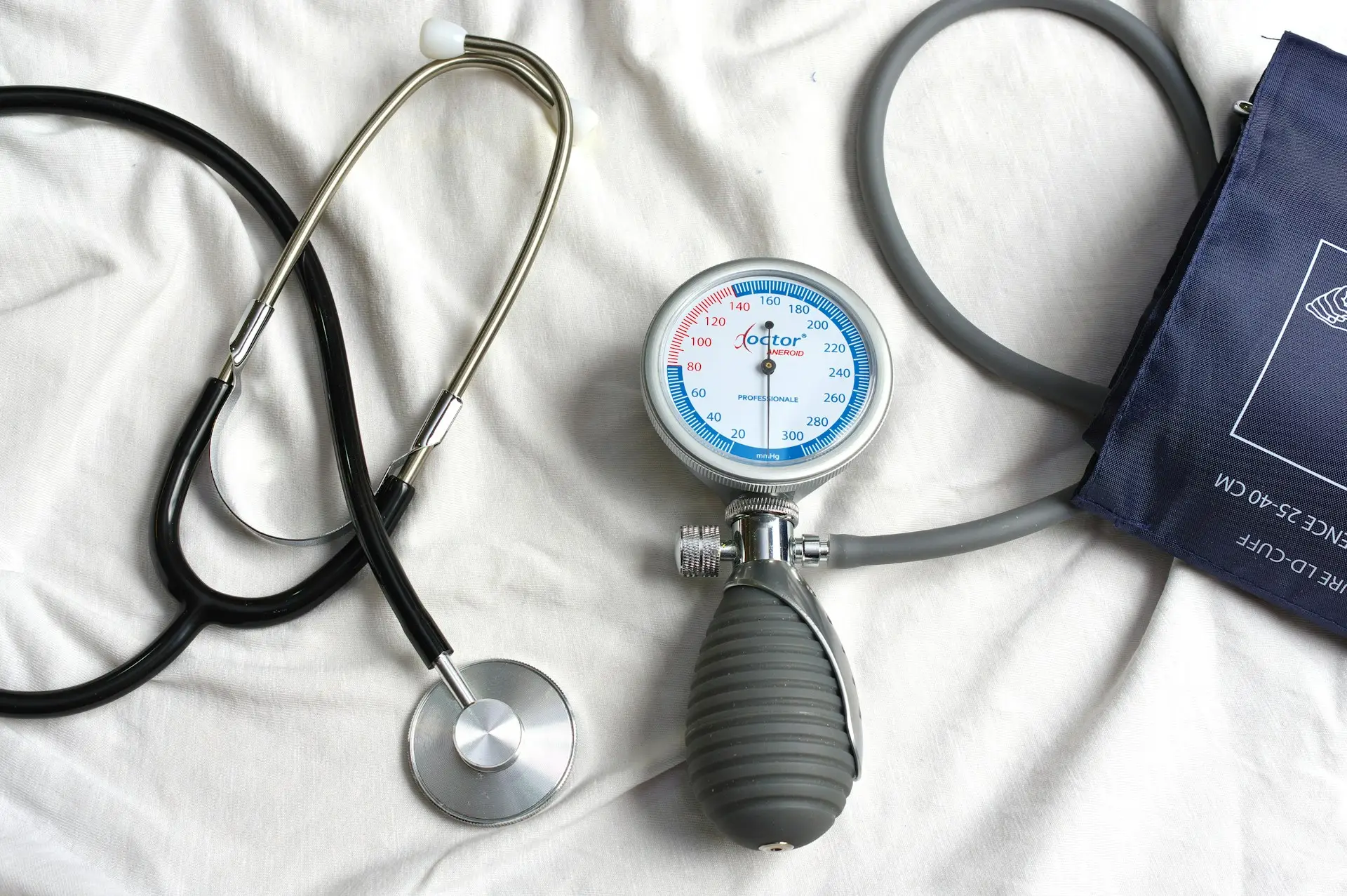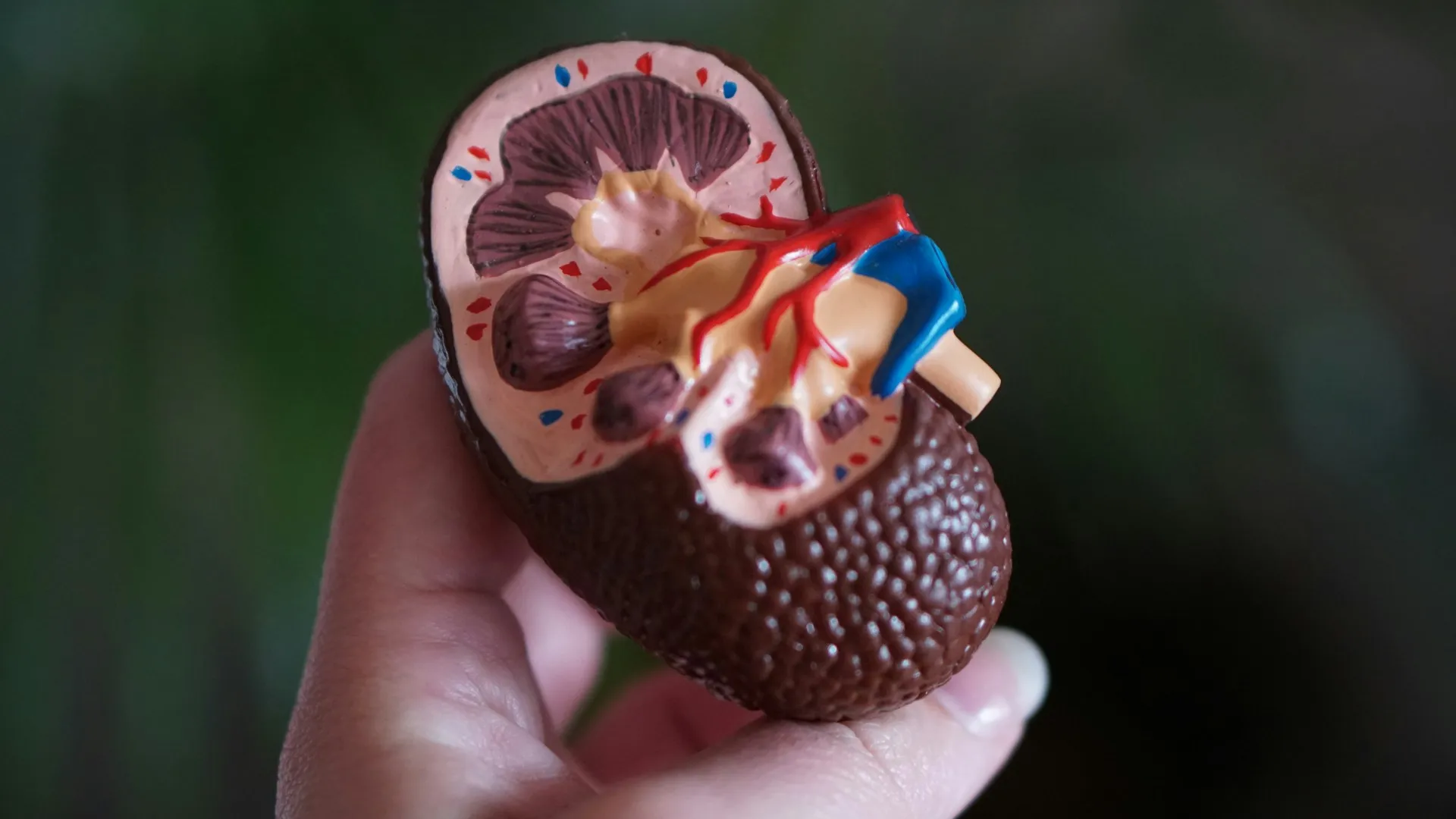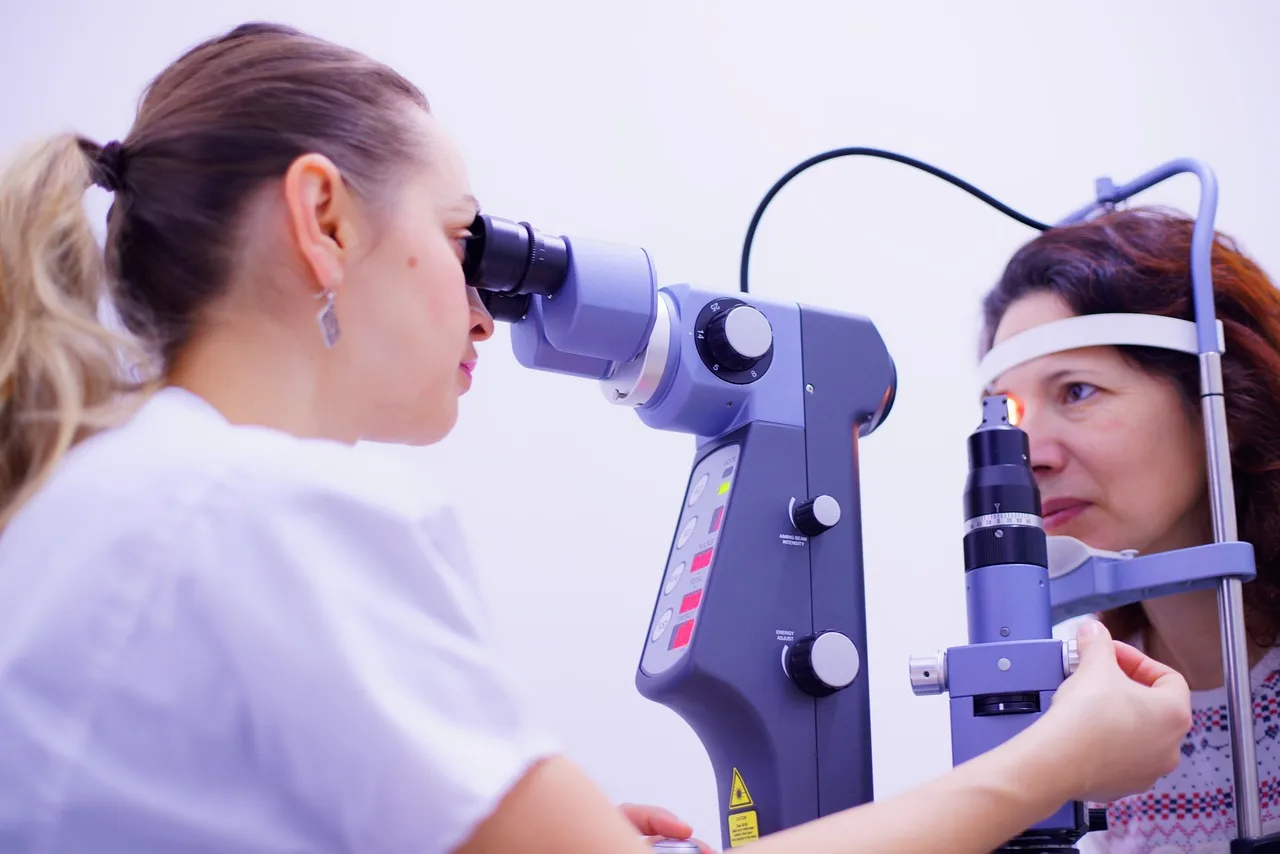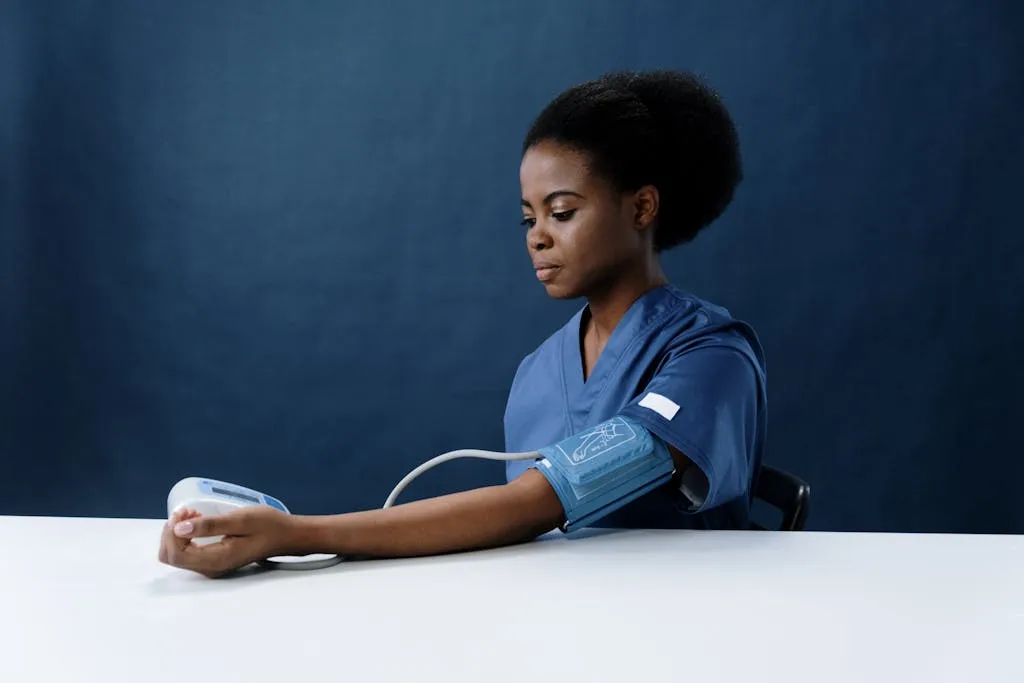High blood pressure (hypertension) is a medical condition where the force applied by blood on the walls of your arteries is consistently higher than normal.
Depending on its cause, high blood pressure can be classified into two types. The more common type, primary (essential) hypertension, does not have a single known cause. In contrast, secondary hypertension is caused by an underlying medical condition or medication.
Worldwide, about 1.28 billion adults aged 30–79 years have hypertension. Almost one half of all adult hypertensive patients do not know that they have the condition. Primary hypertension accounts for 90-95% of adult hypertension cases, while secondary hypertension accounts for 5-10%.
Causes of primary Vs secondary hypertension
Causes of primary hypertension
Primary hypertension is not caused by a known condition. But there are factors that are associated with increased risk for getting the condition. These risk factors include:
- Increasing age
- Consuming a high sodium diet
- Drinking too much alcohol
- Lack of exercise
- Positive family history of hypertension
- Obesity
- Smoking
- Diabetes
Causes of secondary hypertension
Medical conditions that can cause secondary hypertension include:
- Kidney disease
- Thyroid disorders
- Adrenal disorders
- Coarctation (narrowing) of the aorta
- Obstructive sleep apnea
- Acromegaly
- Narrowing or blockage of the blood vessels that supply the kidneys (renal arteries)
Medications that can cause secondary hypertension include:
- Non-steroidal anti-inflammatory drugs (NSAIDs)
- Decongestants
- Appetite suppressants
- Antidepressants
- Corticosteroids
- Oral contraceptives
- Recreational drugs like cocaine, methamphetamine, alcohol
- Medicines for attention deficit hyperactivity disorder (ADHD) like methylphenidate and amphetamine
Symptoms of primary Vs secondary hypertension
Whether primary or secondary, high blood pressure itself is a silent condition that usually causes no symptoms. However, you may notice symptoms later on in the condition. These may include:
- Vision changes
- Chest pain
- Shortness of breath
- Dizziness and lightheadedness
- Headache
- Nosebleeds
If you have secondary hypertension, you may also have symptoms unique to the specific condition causing your high blood pressure. Some common symptoms include:
- Symptoms of kidney disease, such as low back pain, decreased urination, foamy urine, swelling of the feet, ankles, and face.
- Symptoms of thyroid disease, such as diarrhea, fatigue, unexplained weight loss or weight gain, intolerance to heat or cold, feeling of abnormal heartbeats (palpitations).
- Symptoms of adrenal disease, such as weakness, muscle cramps, purple striations (lines) on the skin, enlargement of breasts in men (gynecomastia), loss of menstrual periods in women, anxiety, excessive sweating, palpitations.
- Symptoms of sleep apnea, such as loud snoring, daytime sleepiness, and daytime fatigue.
Diagnosis of primary Vs secondary hypertension
Diagnosis of primary or secondary hypertension involves taking a medical history and physically examining the patient’s body. A doctor will need to know of the symptoms you have, medicines you are taking, chronic medical conditions and your family history.
Your blood pressure will be measured or monitored over time. Blood pressure persistently higher than 130/80 mmHg is considered hypertension. You will be diagnosed with primary hypertension when you have high blood pressure, but none of the conditions that cause secondary hypertension.
To confirm that you have secondary hypertension, your doctor will need to assess you further. Not all patients with high blood pressure receive further evaluation for secondary hypertension. The factors that may be used to determine if you should be checked for an underlying cause of your hypertension include:
- Having no family history of high blood pressure.
- Being younger than 30 years.
- Having high blood pressure that does not respond to maximum safe doses of 3 different antihypertensive drugs.
- Extremely high blood pressure.
- Sudden, severe rise in blood pressure.
- Symptoms or signs suggestive of an underlying condition.
Tests that may be done to check for possible causes of secondary hypertension include:
- Computed tomography (CT) scan or magnetic resonance imaging (MRI) of the abdomen
- Ultrasound scan of the kidneys
- Blood tests to measure levels of certain hormones
- Urine analysis
- Polysomnography (sleep study)
- Tests for potassium, sodium, and calcium levels in blood
Treatment of primary Vs secondary hypertension
Treating primary hypertension
The treatment plan for a person’s primary hypertension involves taking antihypertensive medications, monitoring blood pressure regularly, and recommendations for lifestyle changes. Many medications are effective against high blood pressure. Your doctor will determine which particular drug is best for you.
The lifestyle tips that may be effective for managing primary hypertension include:
- Exercising regularly
- Reducing how much alcohol you consume
- Stopping smoking
- Consuming a low salt and high potassium diet
- Eating lots of fruits and vegetables, but limiting intake of fat-rich foods
- Maintaining a healthy weight
Treating secondary hypertension
Secondary hypertension will persist as long as you have the underlying condition causing it. To treat the secondary condition, your doctor may determine that you need to take certain appropriate medications, have surgery done, or stop taking certain blood pressure raising medicines.
Throughout the treatment of the secondary condition, you will also need to take antihypertensive medications and follow blood pressure lowering lifestyle habits. These are the same habits recommended for people with primary hypertension, and they include: eating a healthy diet, being physically active, maintaining a healthy weight, stopping smoking, and reducing alcohol intake.
Complications of primary and secondary hypertension
Uncontrolled high blood pressure, whether primary or secondary, can slowly damage different body organs. The resulting complications may include:
- Heart disease
- Kidney disease
- Stroke
- Dementia
- Abnormal heartbeats
- Eye disease
- Peripheral artery disease
Unlike primary hypertension, secondary hypertension is more likely to cause you resistant hypertension. Resistant hypertension is high blood pressure that is not controlled by maximum doses of at least 3 antihypertensive medications, one of which is a diuretic (water pill).
Frequently asked questions
Can I have primary and secondary hypertension at the same time?
Yes, you can have both types of high blood pressure at the same time. This is usually the case when a secondary condition causes a sudden rise in the blood pressure of a hypertensive person whose blood pressure has been previously well controlled by medications.
According to the World Health Organization (WHO), about 46% of hypertensive adults do not know that they have the condition. Because of this, it is also possible to have a secondary condition worsening already existing but undiagnosed primary hypertension.
Which of the two types of hypertension is genetic?
Both types of hypertension can be genetic.
While most cases of secondary hypertension have no direct genetic link, rare forms of the condition can arise from monogenic mutations (meaning mutations involving single genes). There have been at least 15 hypertension genes identified so far, and these are also called Lifton genes. Mutations in these genes typically cause secondary hypertension by affecting how well your kidneys handle salt and water.
Having certain genes may also indirectly cause secondary hypertension by increasing your chances of getting conditions that can raise your blood pressure. For example, atherosclerosis and fibromuscular dysplasia, the 2 commonest causes of renal hypertension, are associated with certain identified genes.
Genetic factors associated with primary hypertension are complex. Multiple genes have been identified as contributing to a rise in blood pressure, even without directly causing hypertension on their own. Also, dependence of some of these genes on other risk factors such as old age, diabetes, and high salt diet to contribute to increase in blood pressure, has been evidenced.
What should I remember?
Understanding the difference between primary and secondary hypertension is essential for effective treatment and prevention. Primary hypertension, which has no specific cause, develops gradually and is influenced by factors like age, genetics, and lifestyle. Secondary hypertension, on the other hand, results from an identifiable medical condition, such as kidney disease or hormone issues, and can often be improved by treating the underlying cause.
Both types of hypertension can lead to serious health problems if left untreated, including heart disease and stroke. Managing blood pressure involves lifestyle changes, regular monitoring, and, when needed, medication.
By staying informed and working with your healthcare provider, you can take control of your blood pressure and reduce the risk of complications.












